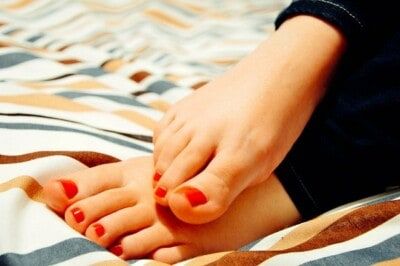Flatfoot, splayfoot, flatfoot: When do foot malpositions have to be treated??
In a perfect world, all people would have perfect feet that cause them no problems when running, standing and walking. In reality, however, the situation is unfortunately often different.
Flat feet, flat feet, splay feet and other foot malpositions are widespread and make life difficult for those affected. Often these problems are congenital, but at least as often they are caused by incorrect footwear or poor walking habits.
Foot deformities do not always have to be treated: Slight deformities can also be corrected with walking exercises and the right shoes as well as orthopedic insoles.
Foot deformities are widespread in many countries
The optimal human foot has three stress points. These are located on the ball of the foot under the big toe and the little toe and on the heel.
When stepping on, the foot bends slightly and allows an even rolling with an equally even load. To do this, the toes should ideally lie straight on in a row.
However, there are hardly any people who have such a foot, because deformities are very widespread. Almost everyone has one or the other foot deformity.
Even small children often have flat feet. In many cases, orthopedists refer to this as a “transitional phase” in which the foot changes, sometimes significantly. Intervention through orthopedic insoles is always necessary when the child has pain while walking.
However, it is generally advisable to let children walk barefoot as often as possible in order to promote the natural development of their feet.
Knee-depression foot usually requires treatment
A flat foot is an extreme form of a flat foot. In adults, this often leads to disturbed statics of the leg, which also causes tendons and soft tissues to be permanently affected.
It is often necessary to treat the bent-countersunk foot to prevent pain and further incorrect posture. Special insoles can be used to gently, but effectively, correct the bend and drop foot.
Especially the toes are supported, but also a bending of the ankle is prevented. In addition to adapted orthopedic insoles, such as those from craftsoles.de is often prescribed a matching physiotherapy.
This should help to learn an optimal stance and at the same time strengthen the foot muscles. Precise measurement and analysis of the affected feet is a prerequisite in order to be able to adapt the insoles exactly to the individual needs of the patient.
Splay feet require the appropriate footwear
A splayfoot is a foot deformity in which the load is in the middle of the forefoot when stepping on it. This leads to pain when walking and standing.
A decisive factor in the development and aggravation of splay feet are shoes that are too tight and have too high heels. Naturally, women suffer more from splay feet for this reason.
Experts recommend wearing wide and comfortable shoes such as sneakers as a preventive measure. These can alleviate already existing complaints after some time. Here, too, orthotics can be prescribed by the orthopedist in particularly severe cases.
Additional strengthening of the foot muscles is also advisable, for example with exercises that particularly target the mobility of the toes. These can also be completed in everyday life, for example at home or in the office.
